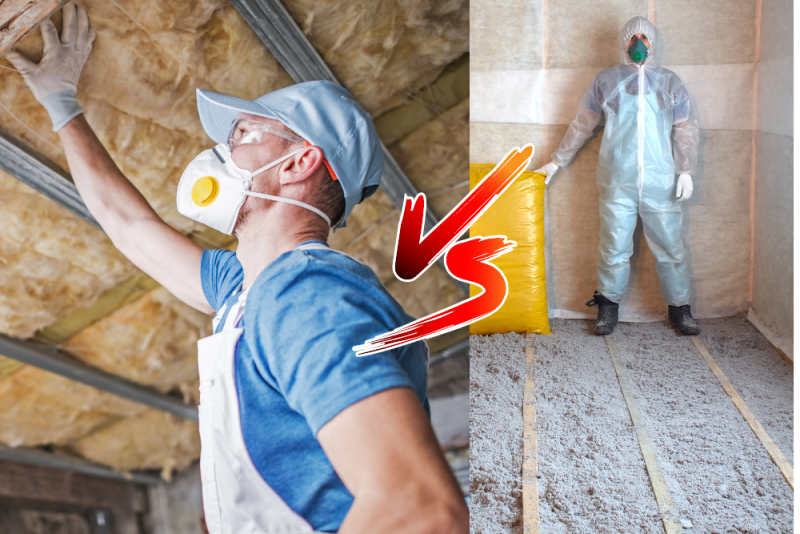Fibreglass and cellulose are the two most frequently used insulation materials. These two materials have successfully improved insulation and energy efficiency over the years. Fibreglass insulation has been frequently used by homeowners; however, recently, cellulose insulation is becoming more popular. Fibreglass and cellulose insulation can benefit homeowners, builders, and remodelers, depending on their location and building code requirements. We understand you want to make an informed decision about home insulation. Let us help you in making the right choice.
Look at the detailed comparison between fibreglass and cellulose presented in this article.
Recycled or Green Products
Good insulation material should benefit the environment and your wallet. One significant advantage of cellulose insulation is it is a green product. It is made up of recycled newspapers and paper products. Safety should not concern you because even though the paper is flammable, cellulose insulation is fire-resistant. It is covered in boric acid and ammonium sulphate that resists fire, insects, moulds and rodents. Cellulose is more environmentally friendlier than fibreglass because less energy is used in manufacturing. In addition to being approved by all building codes, cellulose insulation is efficient at all temperatures making it more desirable.
Cost-effectiveness
The cost varies; sometimes, one is more expensive than the other. It is hard to say which of the two is more cost-effective. The primary reason is that the insulation material costs depend on the prices charged by contractors, suppliers' demand and the market situation. Furthermore, other expenses like installation services, brand and relevant installation fees also add to the final cost of one insulation material. Overall, if one insulation material turns out less expensive, the price difference can range from negligible to dramatic. Therefore, we suggest you choose the preferred material after looking at several other features such as longevity, efficiency, safety and other factors.
Safety
Cellulose is considered safer insulation material compared to fibreglass. Professionals and studies suggest cellulose is health-friendly, fireproof and resists moulds, while fibreglass only enables fireproofing. Compared to fibreglass, cellulose fibres are tightly packed and effectively clog wall cavities. As a result, fire cannot be ignited or spread through framing cavities. Due to this feature, cellulose material fills spaces efficiently and increases energy efficiency in buildings. These properties of cellulose make it a better soundproofing and fire-resistant material.
Comparison of R-value
Every insulation material has a specific R-value, which is its ability to prevent heat flow. A Higher R-value indicates that material has a better ability to insulate and stop the unchecked movement of heat. Cellulose is known to have better insulation capabilities compared to the same quantity of fibreglass insulation. Cellulose has a higher R-value than fibreglass and provides more depth and soundproofing qualities. Other insulation materials require supportive air-barrier systems such as caulk and sealants to function optimally. In contrast, densely packed cellulose can block air alone because cellulose structure is more resistant to heat conduction.
Let Reitzel Help You
Call us for a thorough on-site inspection to determine which insulation suits your home needs. We can help you with our experience and skills. You can discuss the types of insulation with us to determine the best fit for your budget and requirements.

















